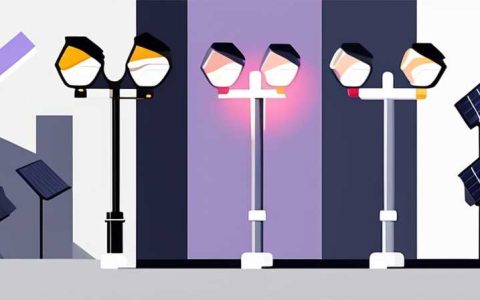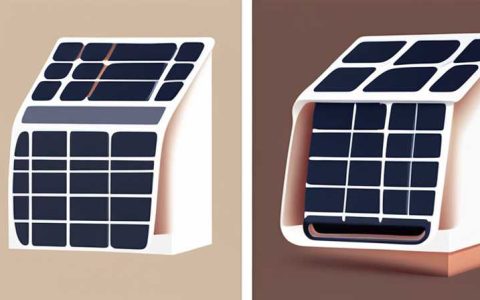
The price of a solar lamp can vary significantly based on several factors, including the type of solar lamp, its brand, output capacity, features, and where it is purchased. 1. Entry-level solar lamps typically cost between $20 and $50, which may suit basic lighting needs. 2. Mid-range solar lamps, offering enhanced features and greater brightness, generally fall within the $50 to $150 price range. 3. High-end or specialized solar lamps can exceed $150, often designed for specific purposes like garden aesthetics or security. 4. Installation costs, features like motion sensors, remote control, or smart capabilities, also play a crucial role in the total expenditure.
One particularly important factor to consider is the longevity and efficiency of the lamp, as higher initial investments can yield better energy savings and durability over time, making them more economical in the long run.
1. UNDERSTANDING SOLAR LAMPS
Solar lamps have seen a significant rise in popularity as a sustainable lighting solution. Solar lamps harness solar energy, converting it into electric power through photovoltaic cells. Given the global emphasis on renewable energy sources, embracing solar-powered devices has become increasingly pertinent. However, understanding what influences the price of solar lamps requires a closer examination of various elements.
The primary appeal of solar lamps lies in their environmentally friendly nature, reducing dependency on conventional electricity sources. The ability to utilize solar energy not only contributes positively to the environment, but it also promises long-term savings on energy bills. The initial investment in a solar lamp can be recuperated over time through these savings. However, the return on investment varies across different brands and models, making price comparison essential.
Potential buyers should also consider the environmental impact of traditional light sources versus solar lamps. Fossil fuels used in conventional electricity generation pose various ecological threats, including greenhouse gas emissions and pollution. In contrast, solar lamps, powered solely by the sun’s rays, reduce the carbon footprint associated with lighting solutions. This awareness encourages more consumers to invest in solar technology.
2. FACTORS AFFECTING THE COST OF SOLAR LAMPS
Numerous aspects contribute to the pricing structure of solar lamps, granting consumers plenty of options based on individual preferences and needs. Understanding these factors can help in making an informed decision.
Brand reputation significantly influences the cost. Established manufacturers often charge a premium for their products due to their investment in research and development, customer service, and branding. Renowned brands generally promise durability and efficiency, which are important for long-term use. However, lesser-known brands might provide competitive pricing; potential buyers must investigate their reliability and performance history.
Another vital factor is the features incorporated into the lamp. Basic solar lamps usually have minimal functionalities, such as simple on/off switches, while advanced models may offer features like motion sensors, dimming options, or integrated smart technology. These enhancements not only elevate convenience but also optimize energy usage, resulting in varying pricing tiers across models.
The material and build quality of solar lamps play a pivotal role in determining their price. Premium materials, such as corrosion-resistant metals or high-grade plastics, often come at a higher cost. However, investing in durable materials can significantly extend the lifespan of the product, offsetting the initial purchase expense. Consumers should weigh the benefits of longevity against the upfront costs when selecting a model.
3. TYPES OF SOLAR LAMPS AVAILABLE
A diverse range of solar lamps exists in today’s market, catering to varying needs and preferences. Identifying distinct types can aid consumers in choosing the appropriate option.
Garden solar lamps, often used for aesthetic purposes, provide ambiance and visual appeal in outdoor spaces. These lamps come in various styles—from decorative to functional—and may include artistic designs or practical illuminating fixtures. With prices typically ranging from $20 to $100, they enrich the ambiance of gardens and walkways while contributing to energy savings.
Security solar lamps are another variant designed primarily for safety and illumination during the night. They generally feature motion detection capabilities allowing them to activate upon detecting activity. This functionality not only enhances security around properties but also conserves battery when not in use. The price range for security solar lamps often falls between $40 to $200, depending on sophistication and brand reliability.
Portable solar lamps offer versatility for outdoor activities like camping or hiking, providing illumination in remote areas without access to electricity. These types often emphasize lightweight design and ease of transport. Prices can vary widely—ranging from $10 for basic models to upwards of $100 for multi-functional devices equipped with charging capabilities for electronic gadgets.
4. INSTALLATION COSTS AND CONSIDERATIONS
When contemplating the purchase of solar lamps, understanding potential installation costs and logistical aspects is crucial. While solar lamps typically require minimal setup, specific models may necessitate professional installation, especially for those integrated into larger solar systems.
Placement and location are essential factors affecting the efficacy of solar lamps. Optimal performance demands adequate sunlight exposure, meaning that buyers should strategically assess which areas will benefit most from solar lighting. Choosing locations that receive ample sunlight throughout the day helps maximize energy conversion and guarantees consistent illumination at night.
Additionally, homeowners should consider whether to integrate solar lamps into existing lighting systems. Wiring compatibility can complicate installation, underscoring the need for professional help. Some homeowners opt to replace traditional lighting with solar alternatives, often requiring careful planning to ensure seamless transitions without compromising aesthetic appeal or functionality. If a property has inadequate sunlight exposure, adapting lighting strategies may require supplemental options or adjustments to the surrounding area to enhance performance.
5. BENEFITS OF SOLAR LAMPS
Investing in solar lamps yields a multitude of benefits, encompassing both financial savings and environmental value. Financially, many consumers appreciate the advantage of decreased electricity costs. By using solar energy, households can significantly reduce reliance on grid electricity, translating to noticeable savings over time. Given the continuous rise in energy prices, this aspect alone makes solar lamps a wise investment for many individuals.
Moreover, solar lamps enable customers to embrace a more sustainable lifestyle. Transitioning to renewable energy sources aligns with growing global efforts to combat climate change, helping to limit carbon footprints. The ease of use combined with eco-friendliness appeals to an increasing number of environmentally conscious consumers striving to reduce their impacts.
Low maintenance requirements present another appealing characteristic of solar lamps. Unlike conventional lighting systems, solar lamps consist of fewer intricacies, often requiring only periodic cleaning and occasional battery replacements. This adds to the overall convenience, making them highly suitable for homeowners and businesses alike.
FAQs
WHAT ARE THE DIFFERENT TYPES OF SOLAR LAMPS?
Solar lamps exist in various forms to suit diverse needs and preferences. Garden solar lamps enhance outdoor aesthetics, focusing on decorative appeal. Security solar lamps provide safety measures with features like motion detection. Portable solar lamps are designed for outdoor activities, allowing convenient use in remote areas. Wall-mounted solar lamps often combine functionality with decorative elements, suitable for illuminating sturdy structures.
Each type serves a distinct purpose, allowing users to choose based on their specific requirements, whether it’s aesthetics, security, portability, or a combination of these characteristics. Selecting the right model comes down to personal needs, intended use, and placement.
HOW LONG DO SOLAR LAMPS LAST?
The lifespan of solar lamps is predominantly influenced by factors such as build quality, brand, and maintenance. Typically, high-quality solar lamps can last anywhere from 3 to 15 years. The solar panels commonly used have a lifespan of about 25 to 30 years, while rechargeable batteries may require replacement every 2 to 4 years, depending on usage and climate conditions.
Proper care and maintenance significantly contribute to their longevity, ensuring optimal performance throughout their expected lifespan. Regular cleaning of solar panels and timely replacement of batteries can help extend the overall functionality, providing reliable lighting for many years.
ARE SOLAR LAMPS WORTH THE INVESTMENT?
The worthiness of solar lamps as an investment largely depends on individual circumstances and intentions. For environmentally conscious individuals seeking sustainable lighting alternatives, solar lamps represent a favorable solution, aligning with eco-friendly practices. Additionally, they promote long-term savings on electricity while providing versatile usage options.
Furthermore, the resulting decrease in dependence on conventional electricity not only contributes to individual cost-effectiveness but also supports efforts against climate change—a matter of growing concern. Ultimately, evaluating personal preferences concerning initial cost, maintenance, and environmental impact aids potential buyers in determining whether solar lamps are a valuable addition to their lighting solutions.
In summary, the expense associated with a solar lamp can diverge tremendously based on multiple determinants, including type, brand, features, and installation considerations. Entry-level options start at approximately $20, while advanced models can exceed $150 or even higher. Both initial investment and long-term feasibility should inform decisions, particularly when evaluating budgetary constraints and environmental responsibility. By recognizing the distinctions amongst various solar lamp types and their specific benefits, consumers can make informed choices that will enhance their living environments while contributing positively to broader environmental aims. Embracing solar-powered options epitomizes a commitment to sustainability, allowing one to partake in an environmentally conscious lifestyle while enjoying the financial advantages associated with energy savings. Thus, solar lamps not only light up spaces but also illuminate the path to a sustainable future, fostering a harmonious relationship between humanity and nature.
Original article by NenPower, If reposted, please credit the source: https://nenpower.com/blog/how-much-does-a-solar-lamp-cost/










